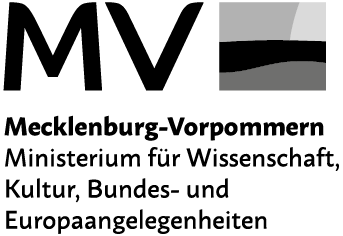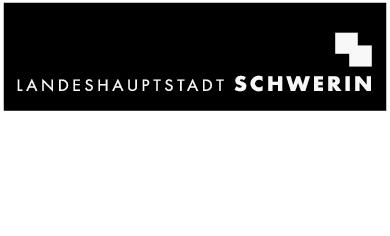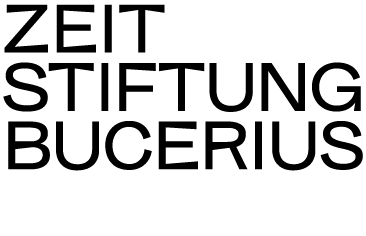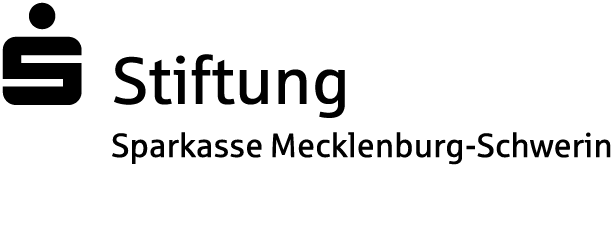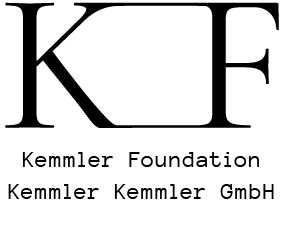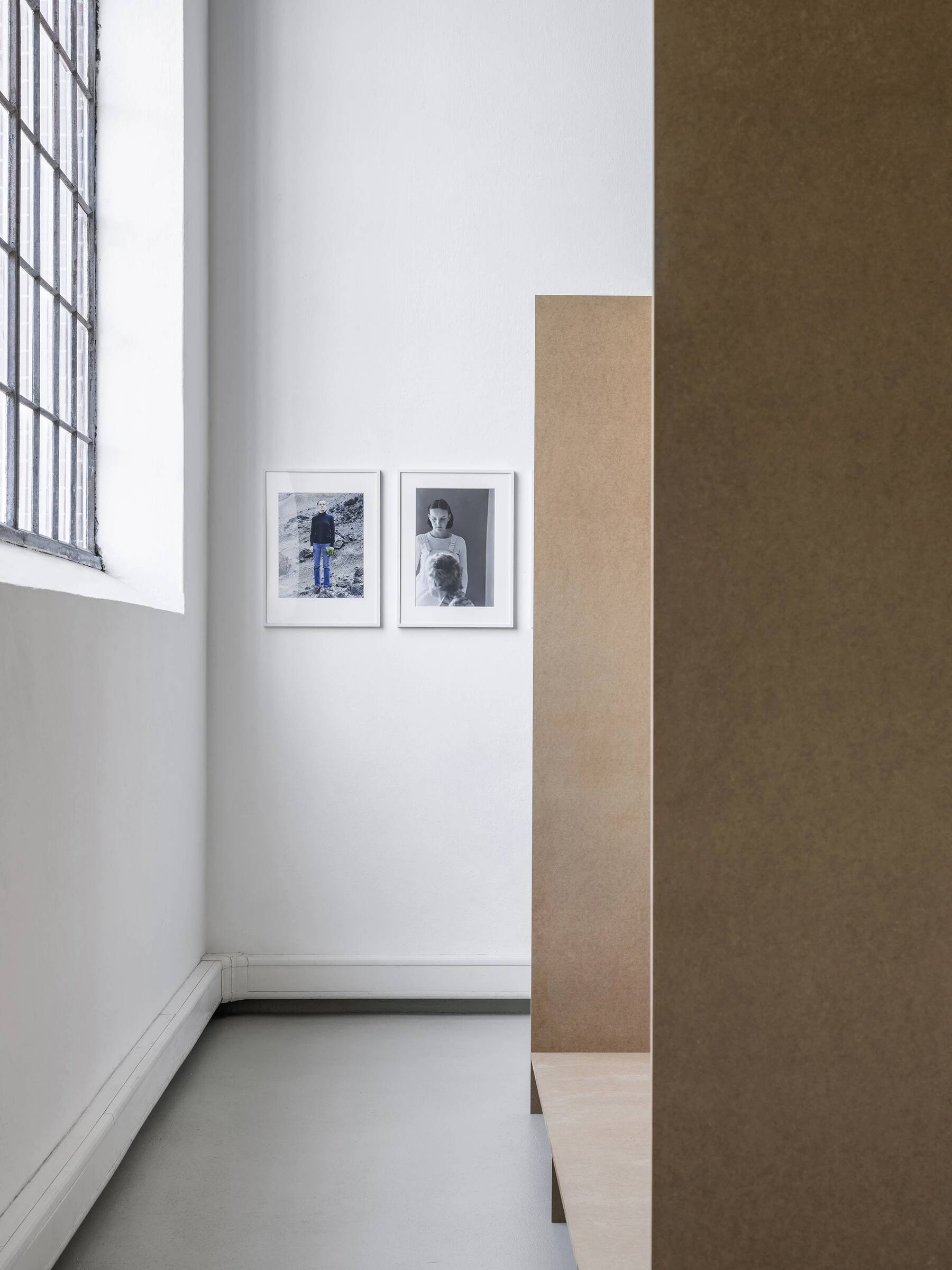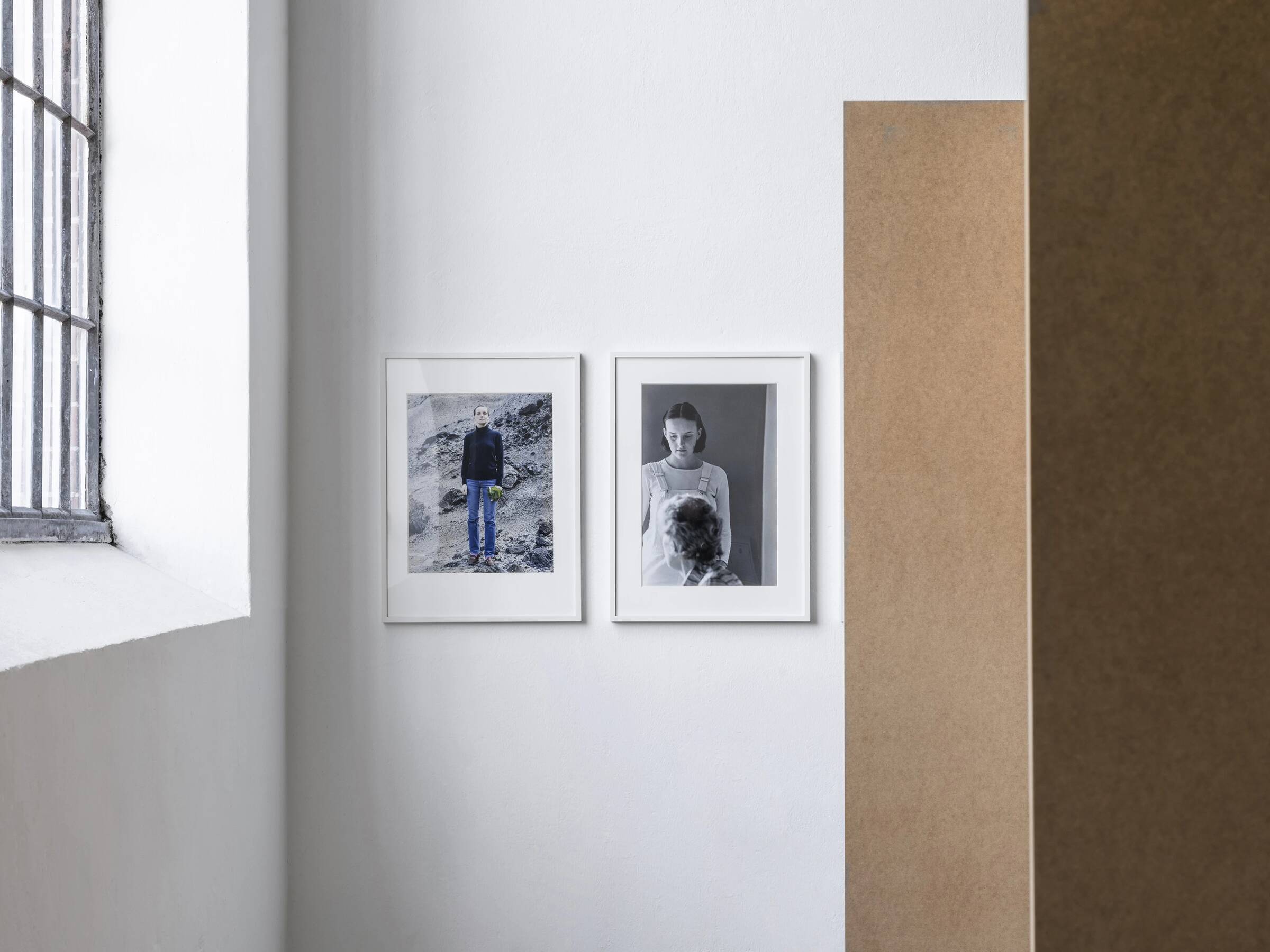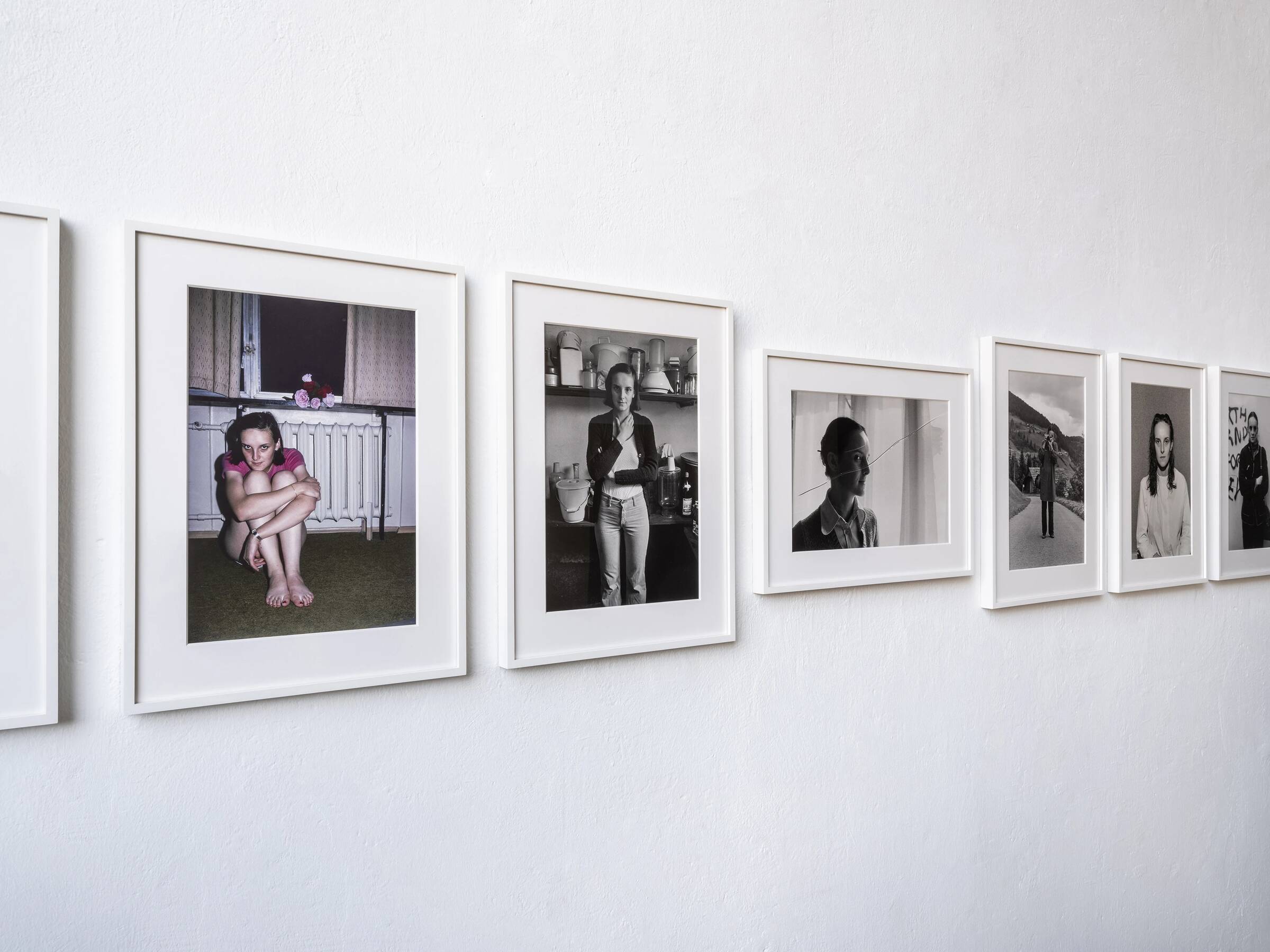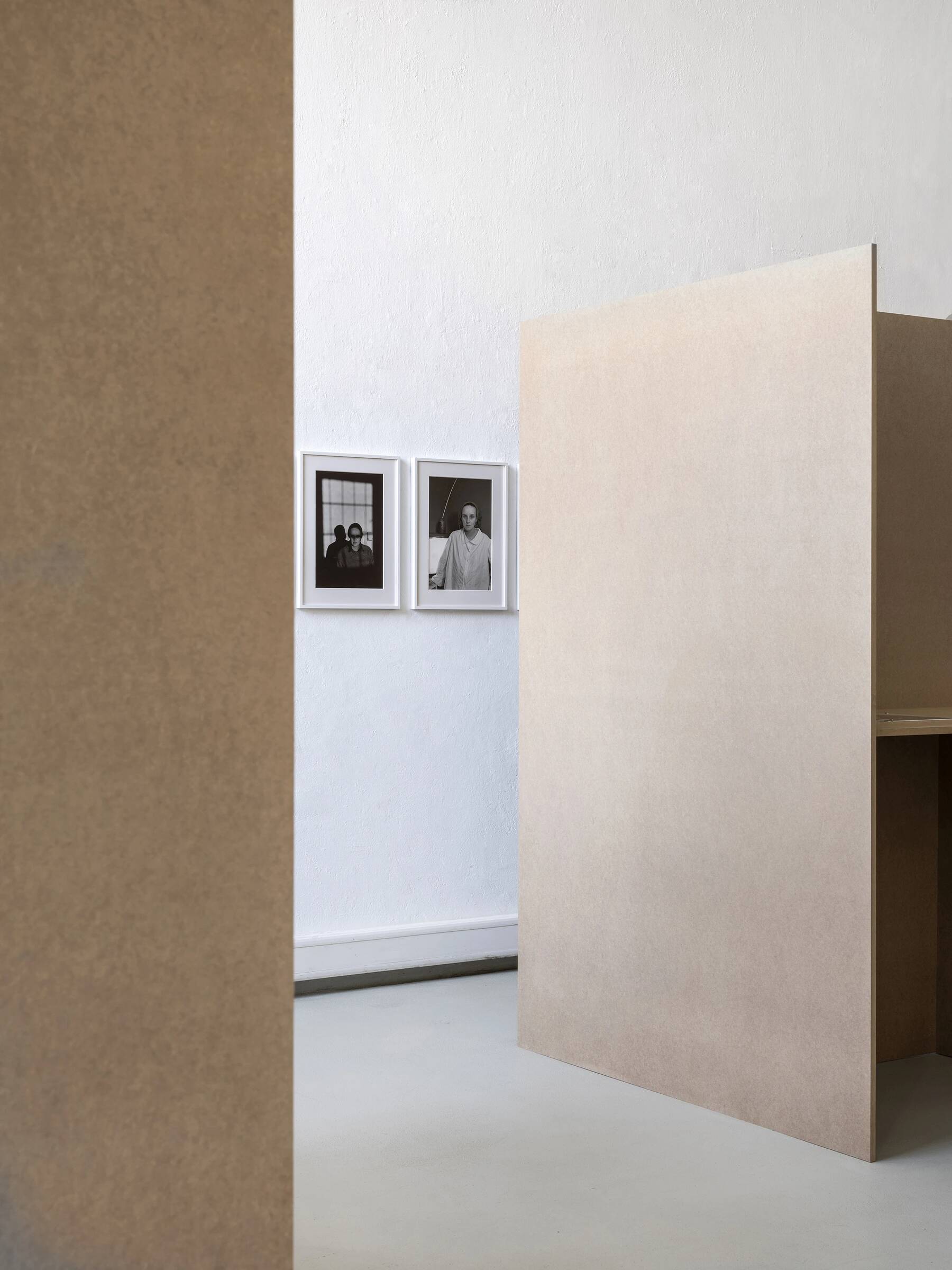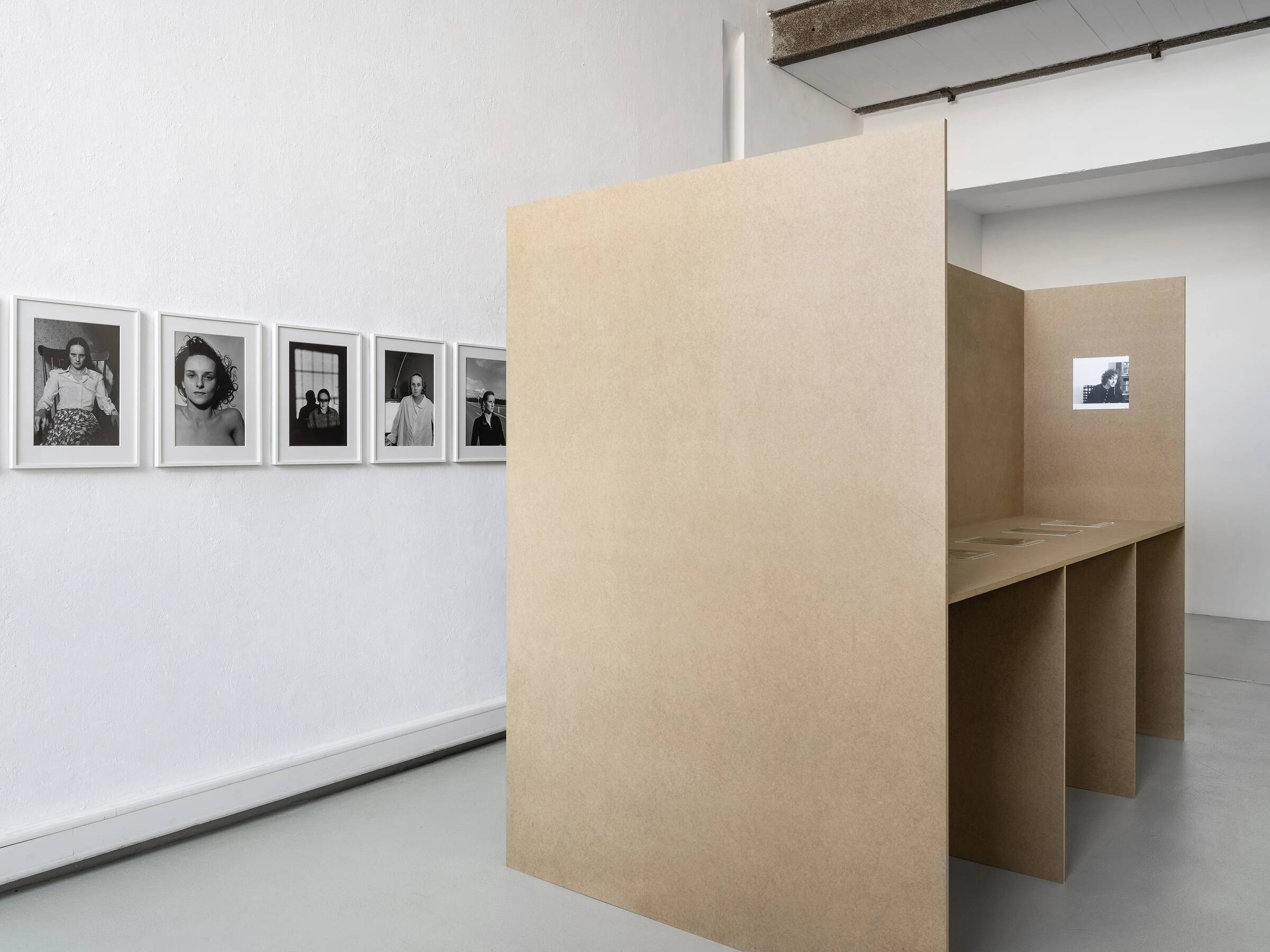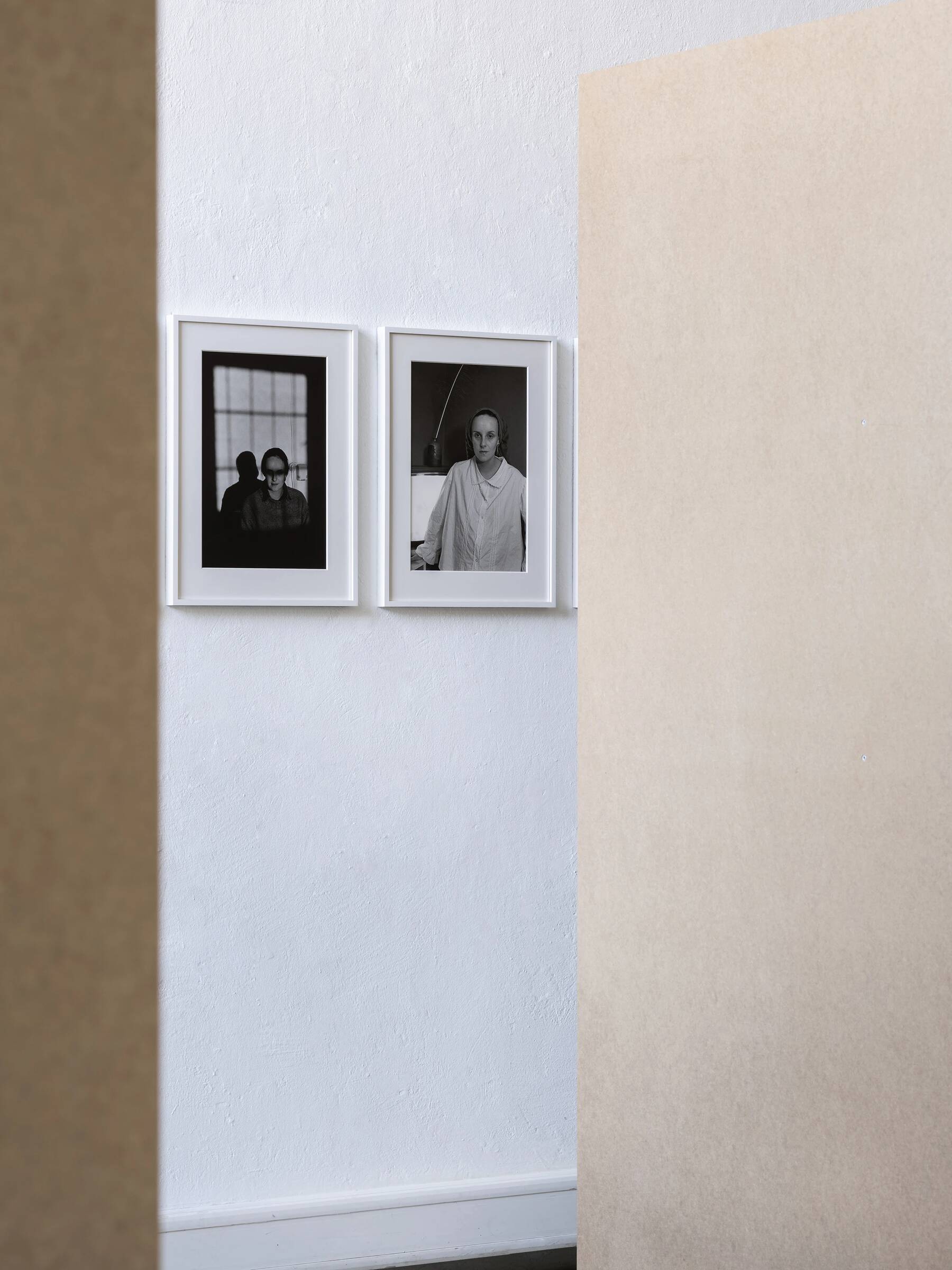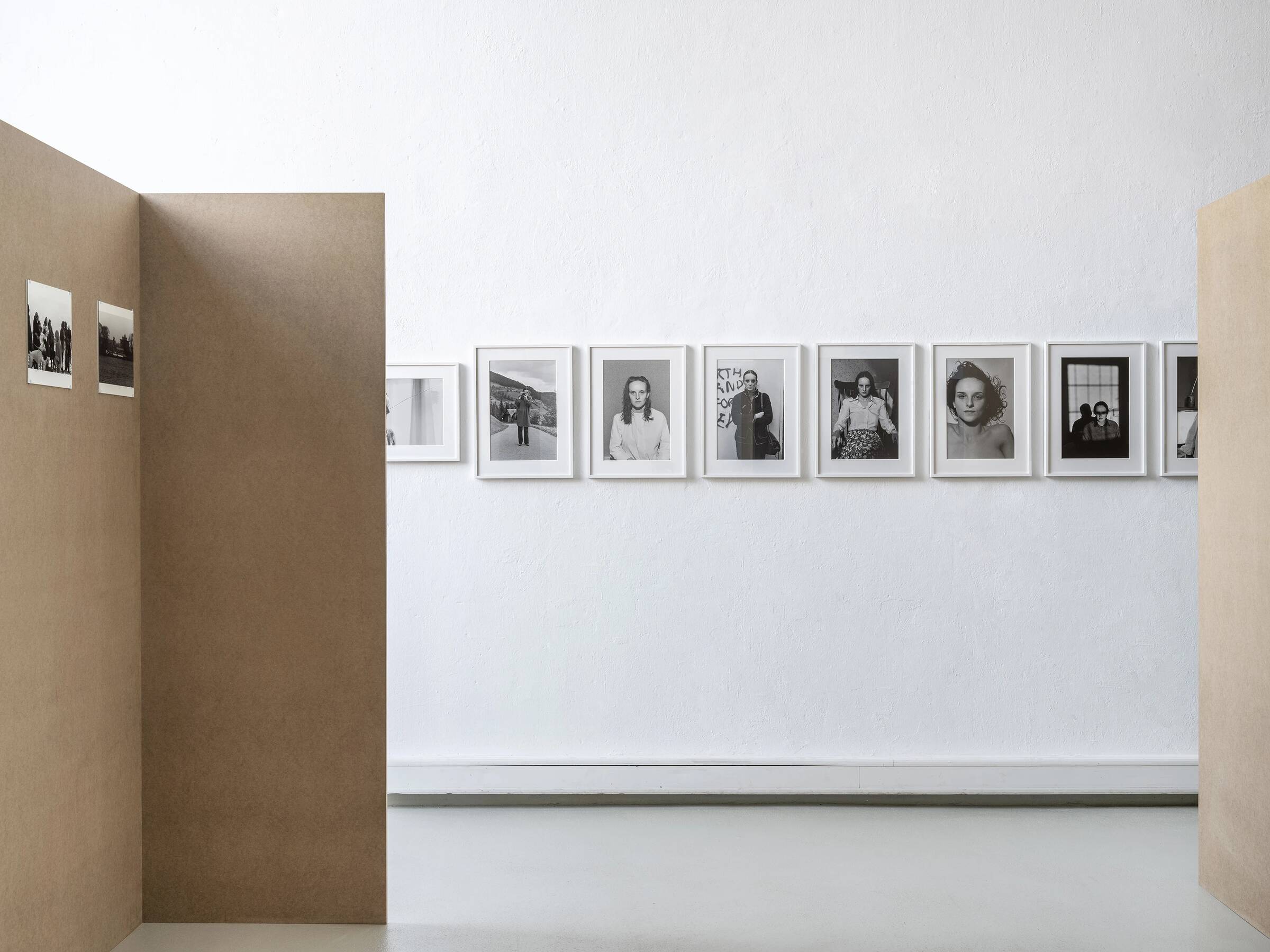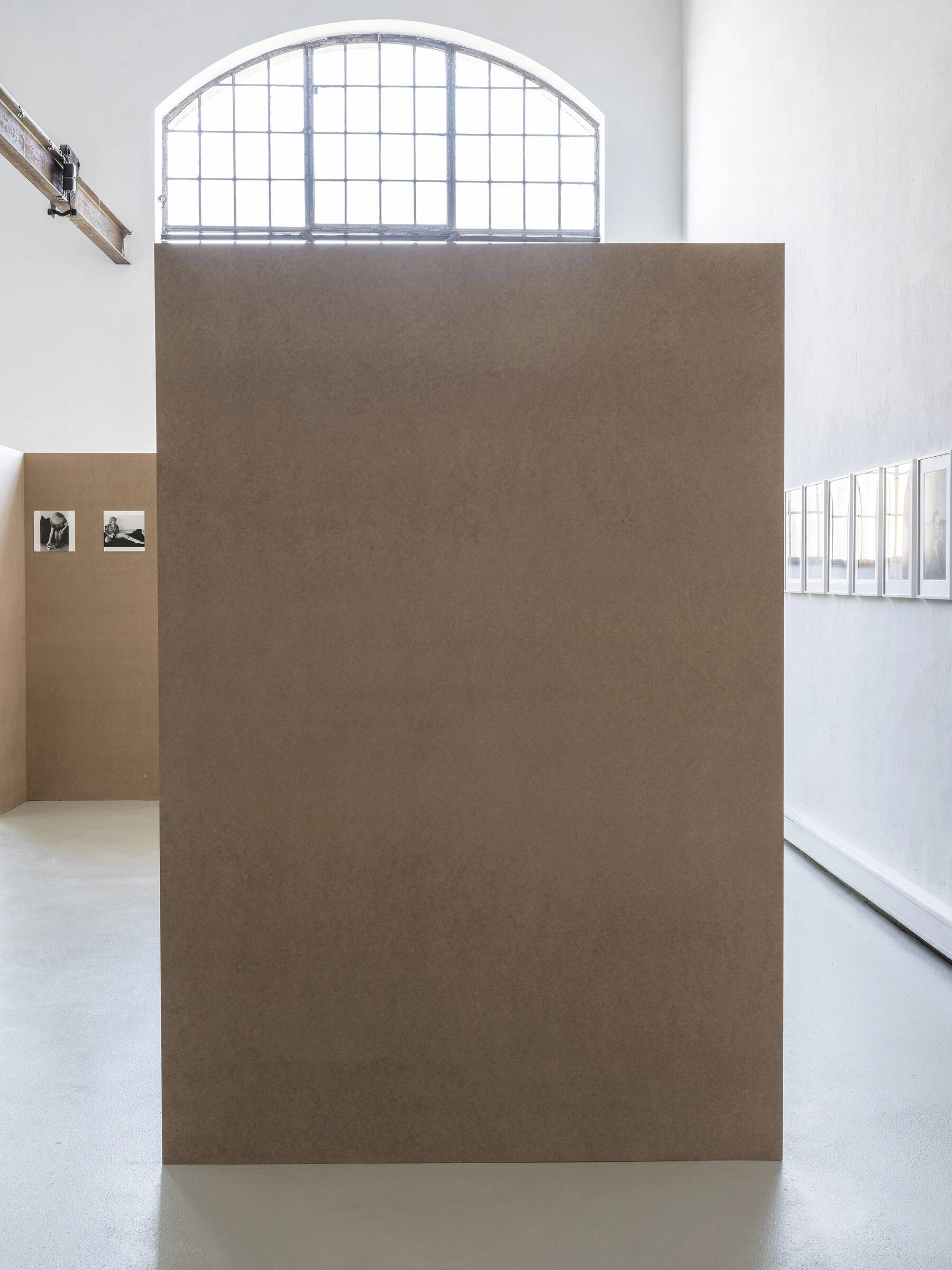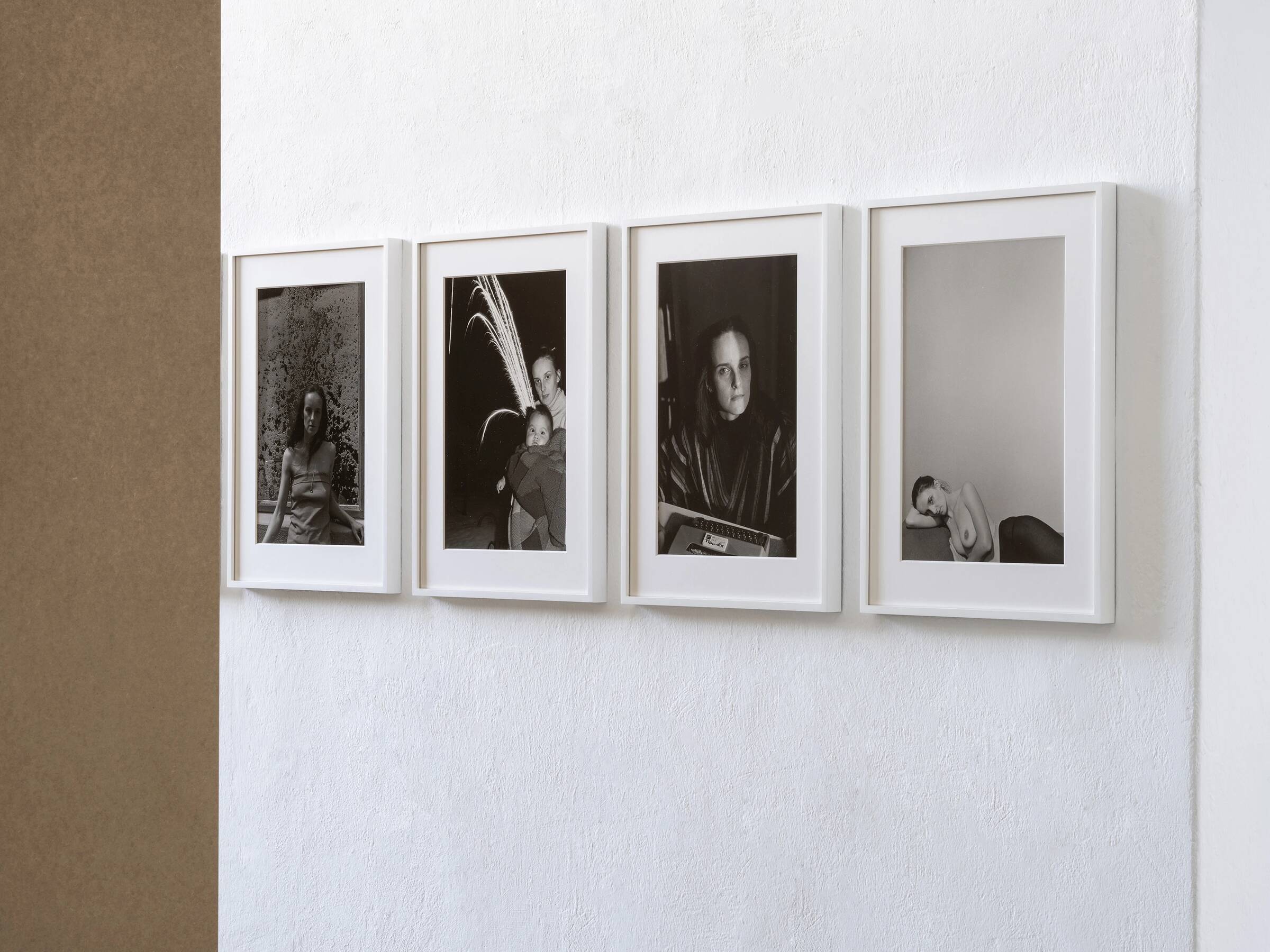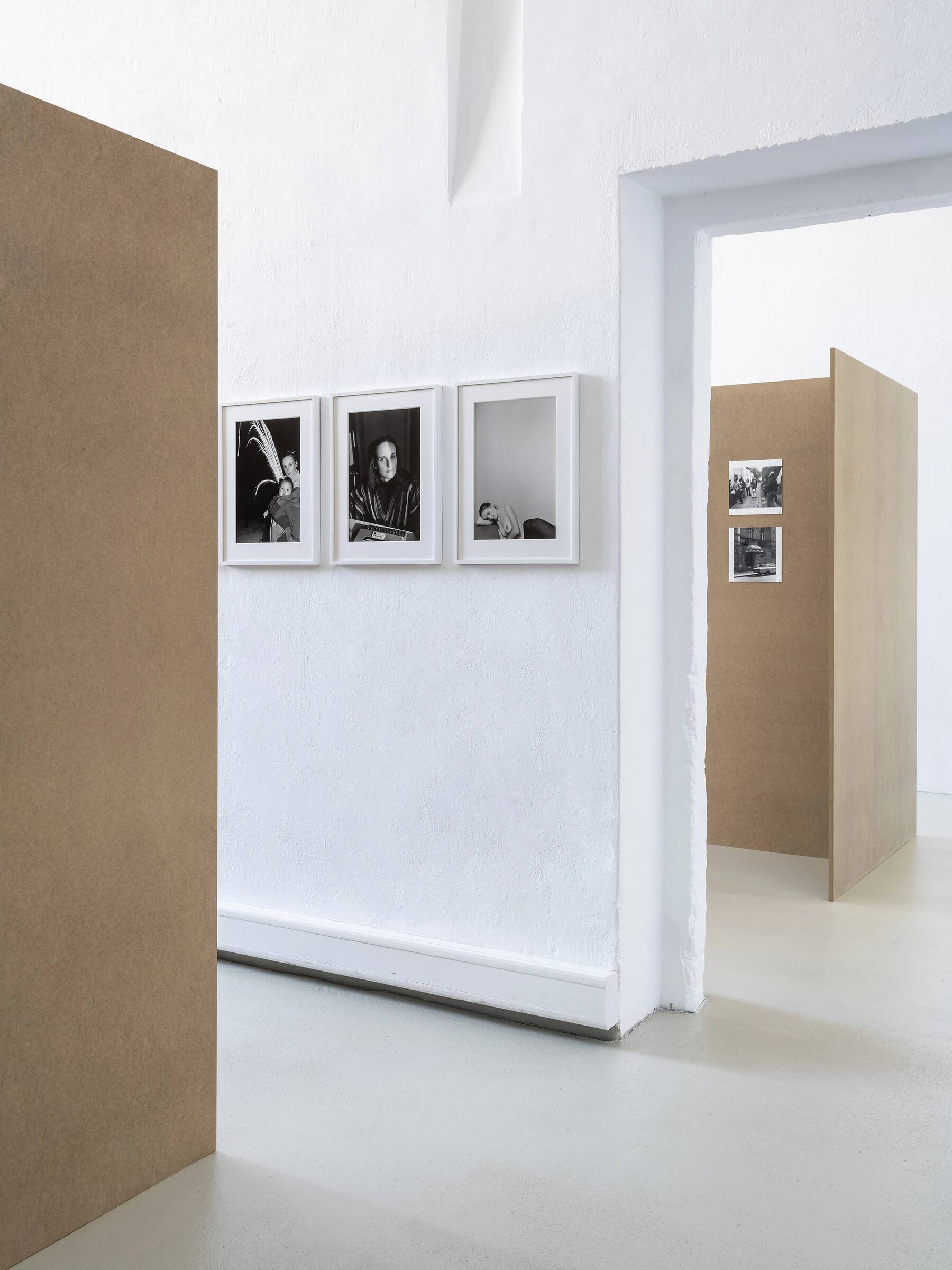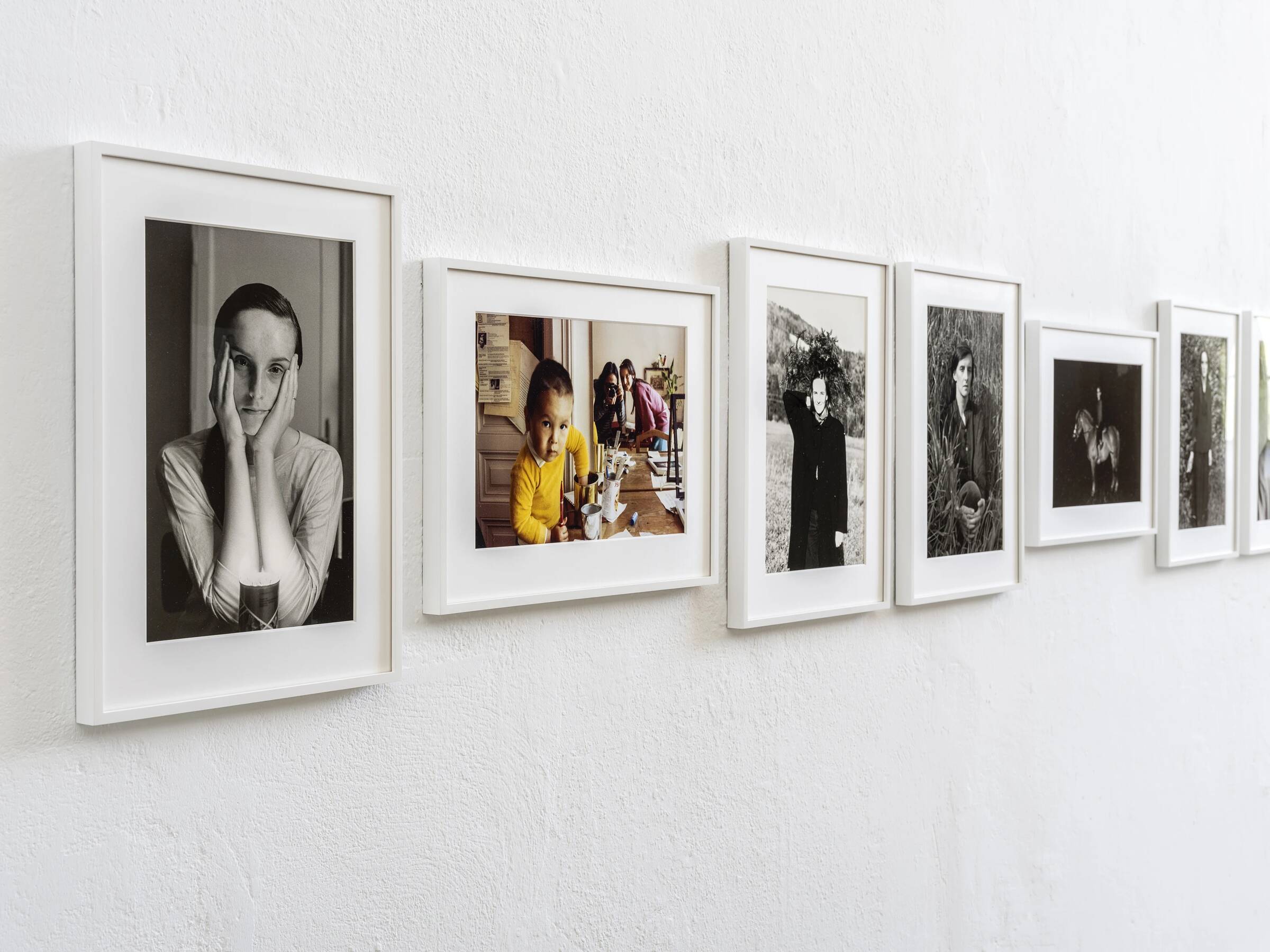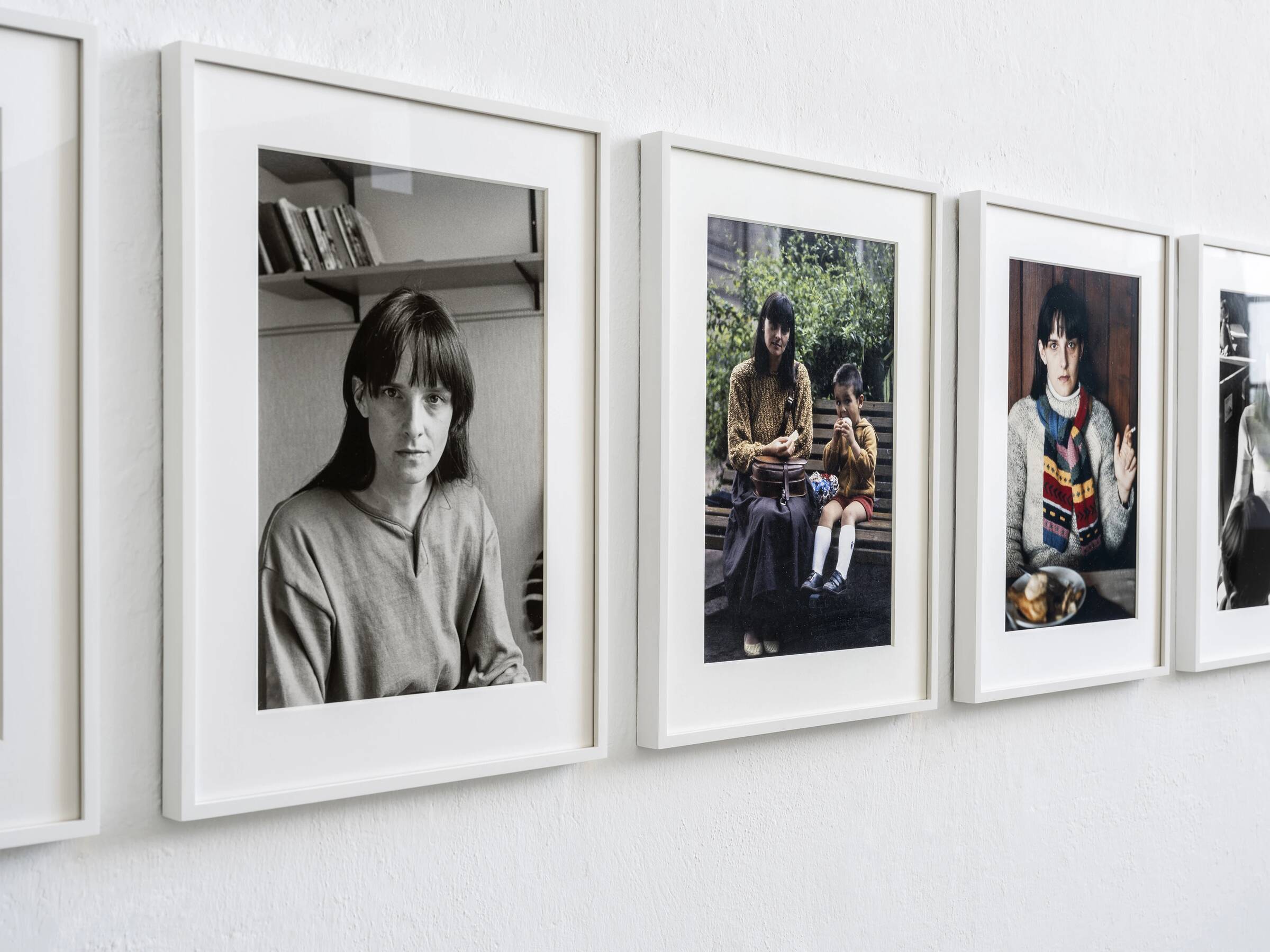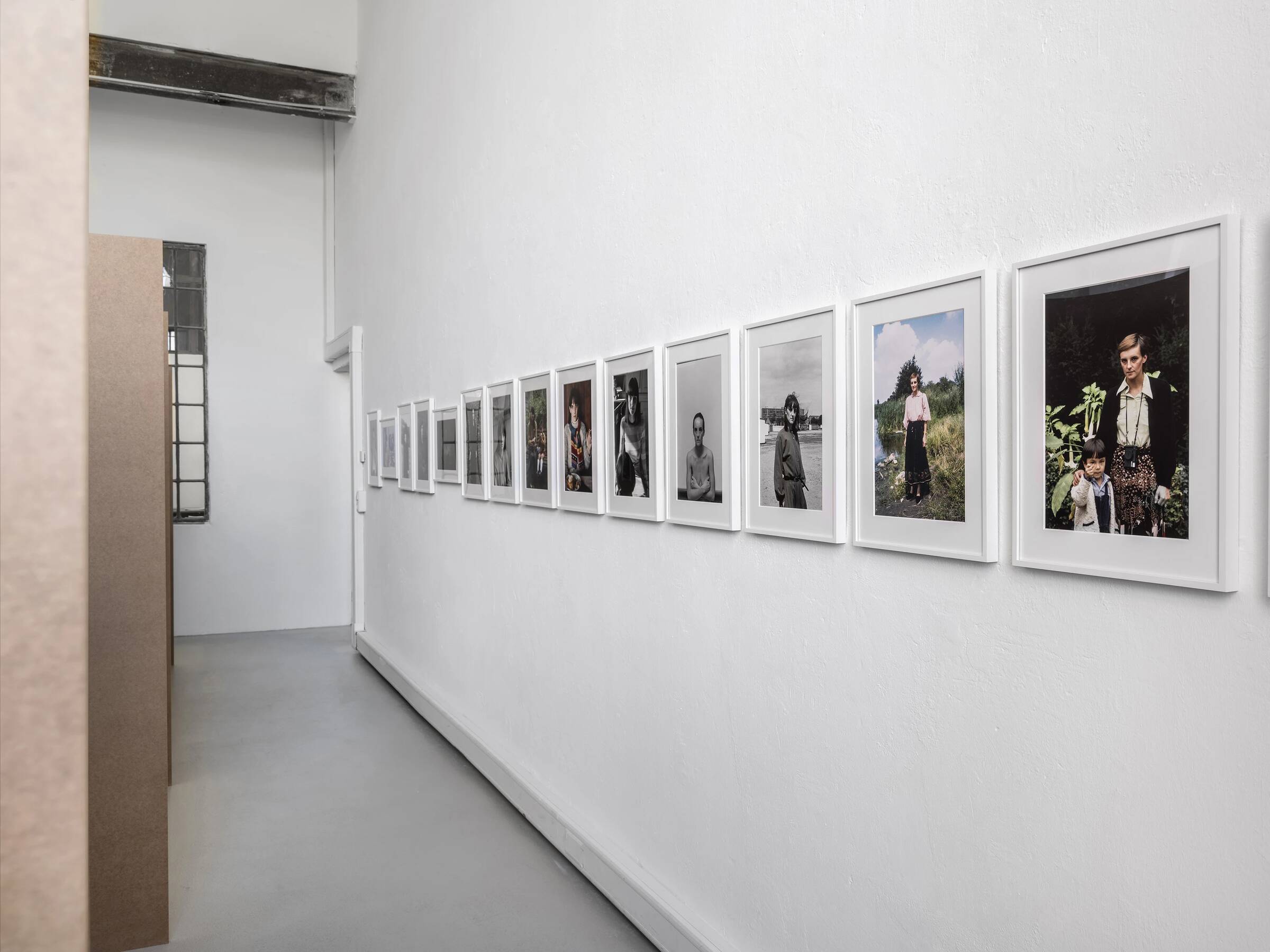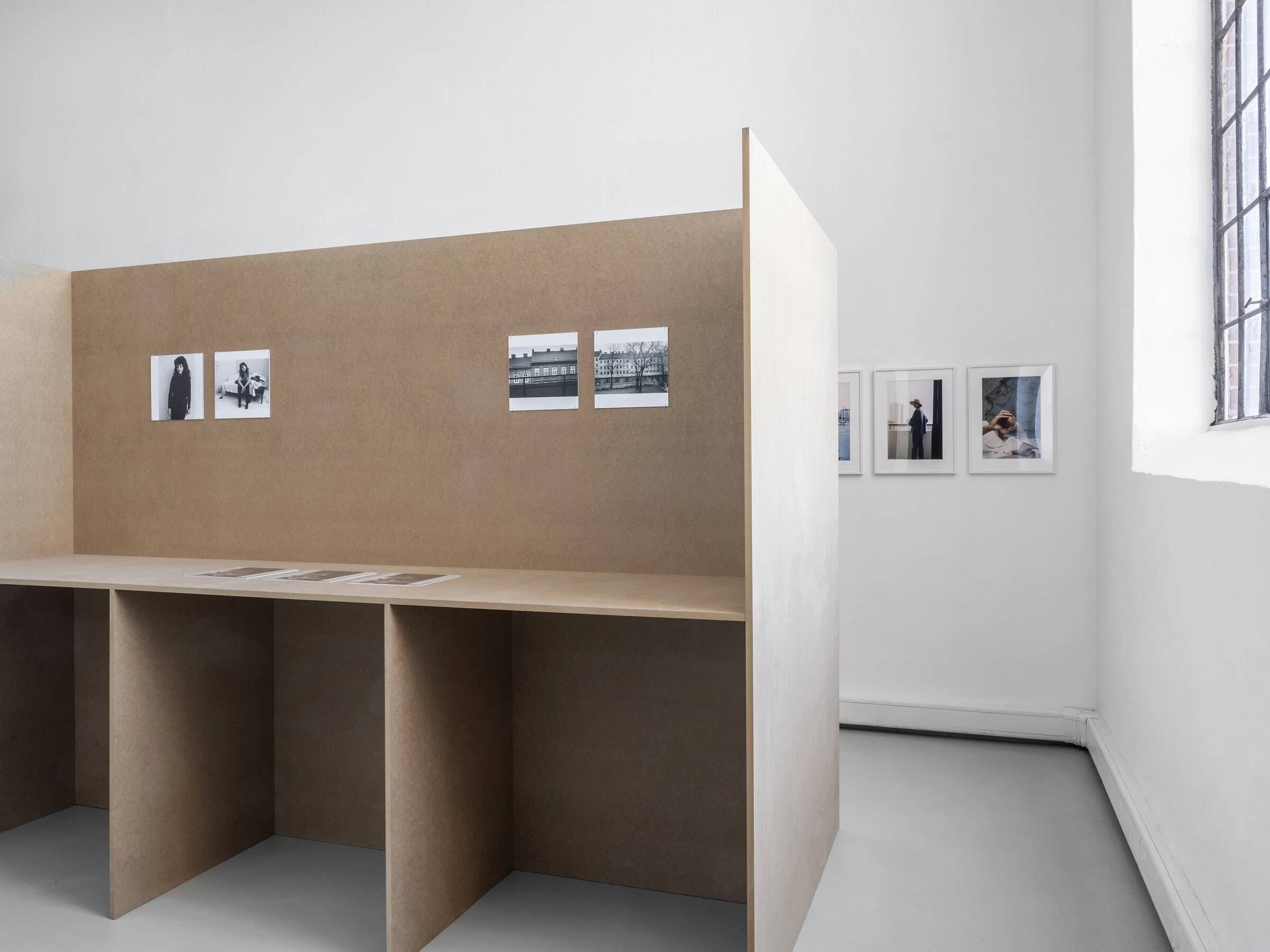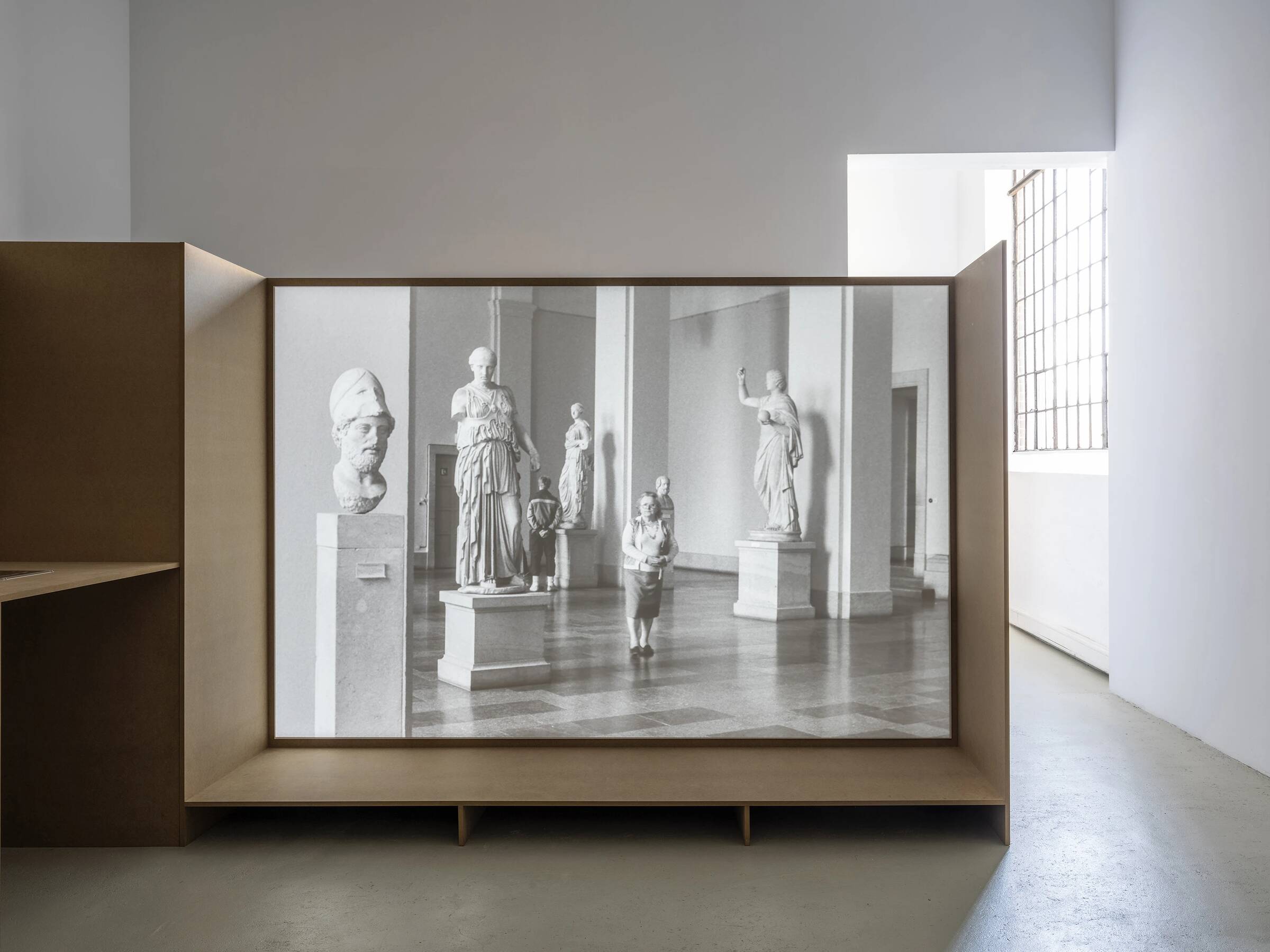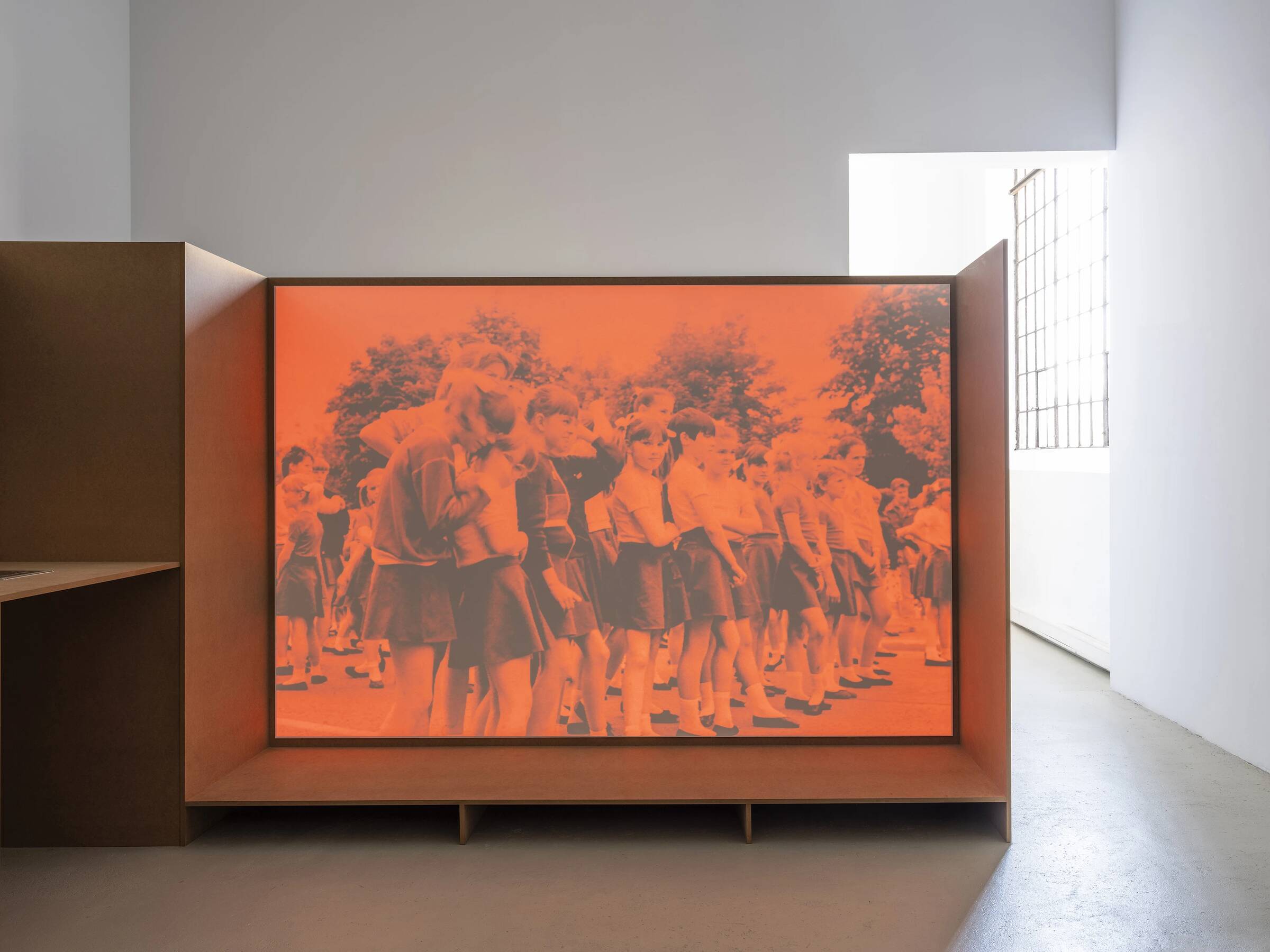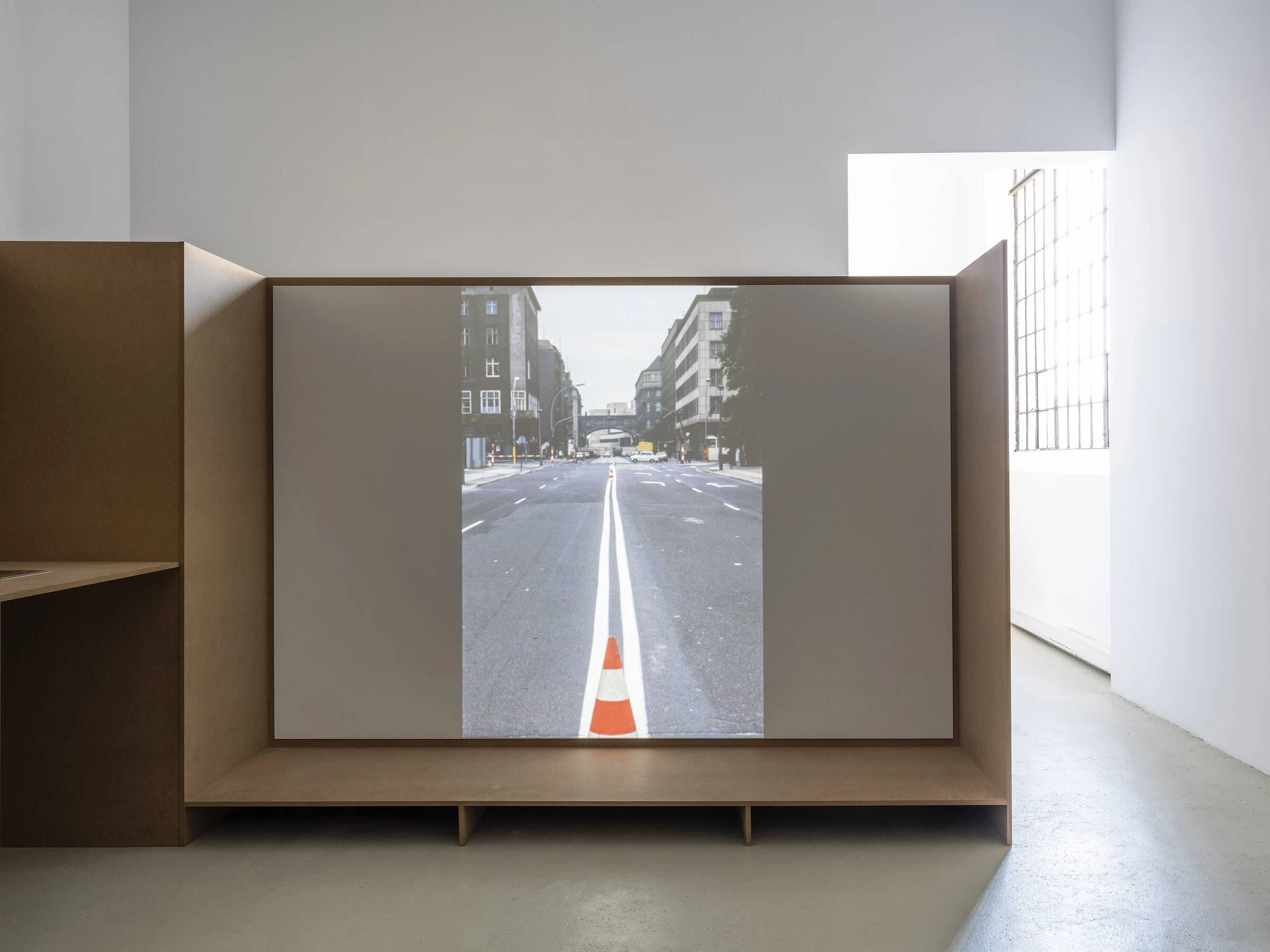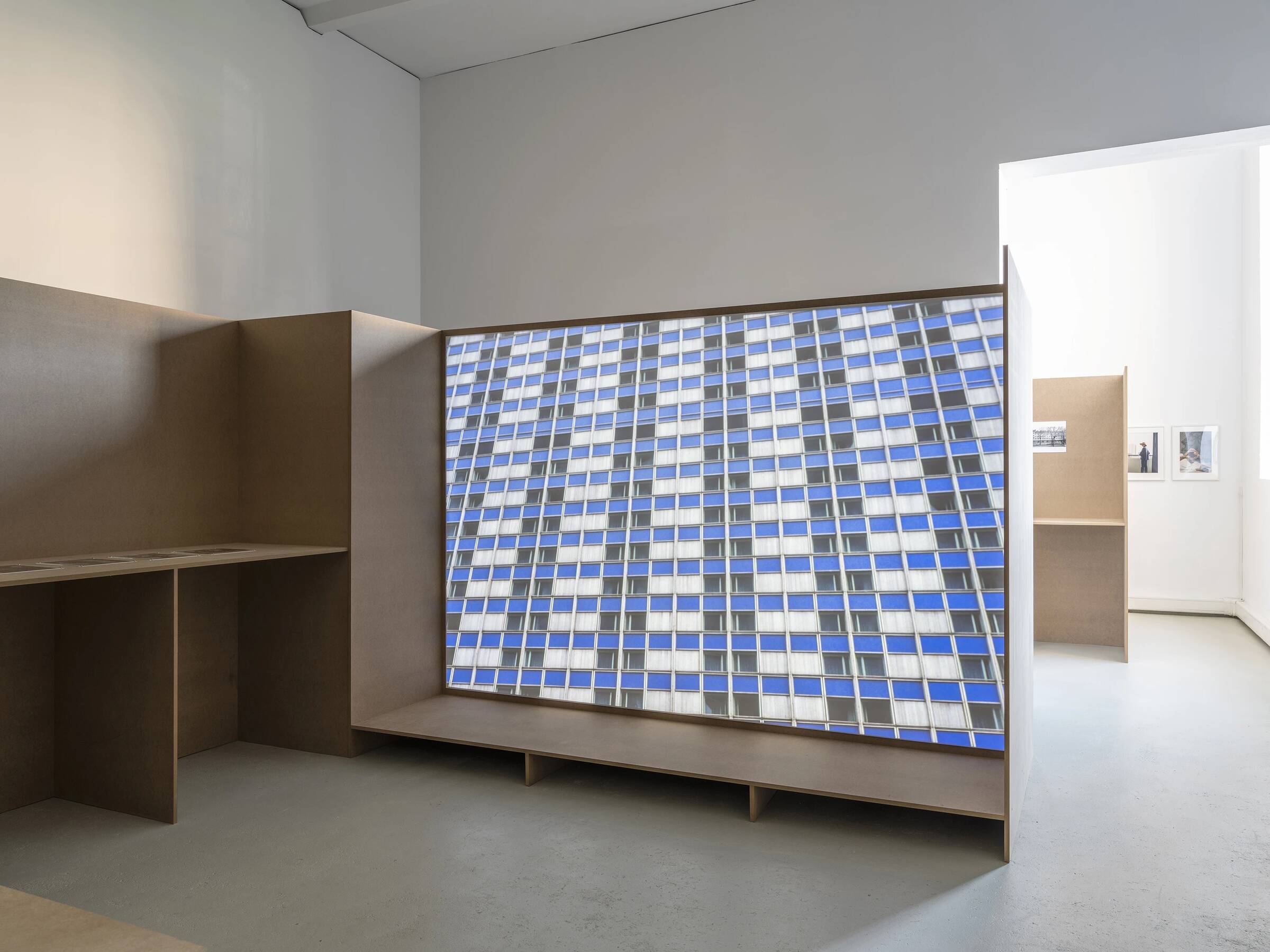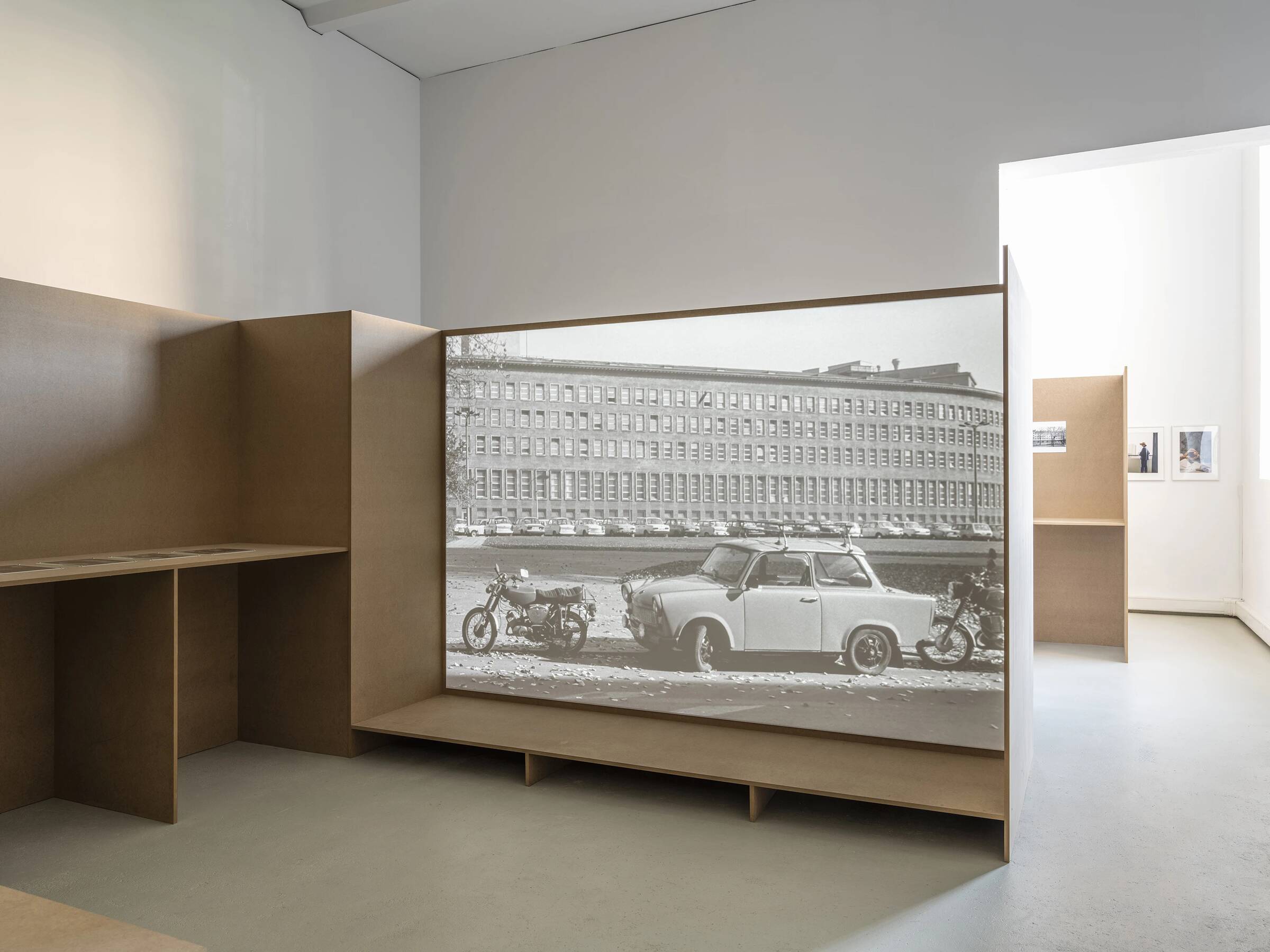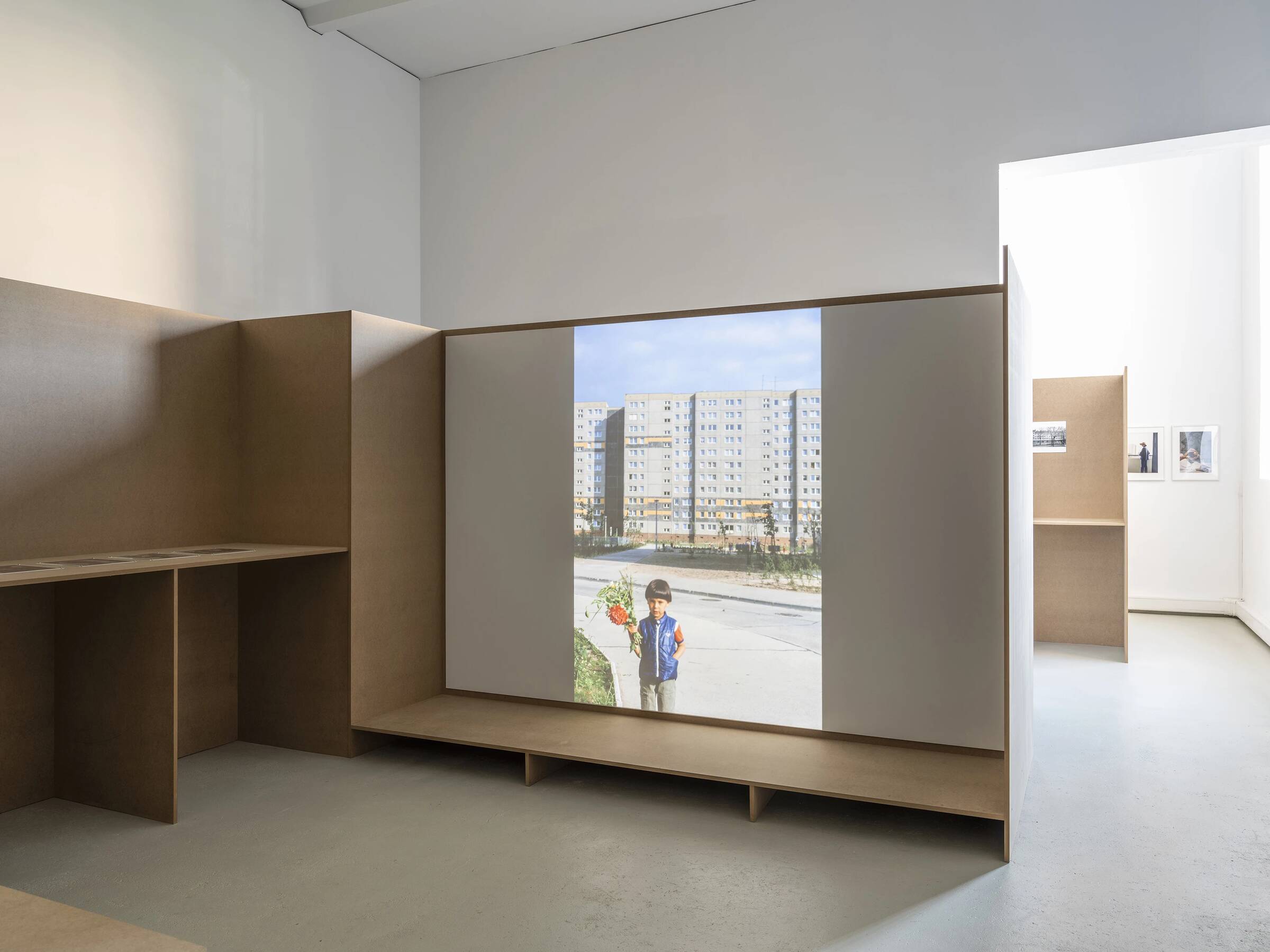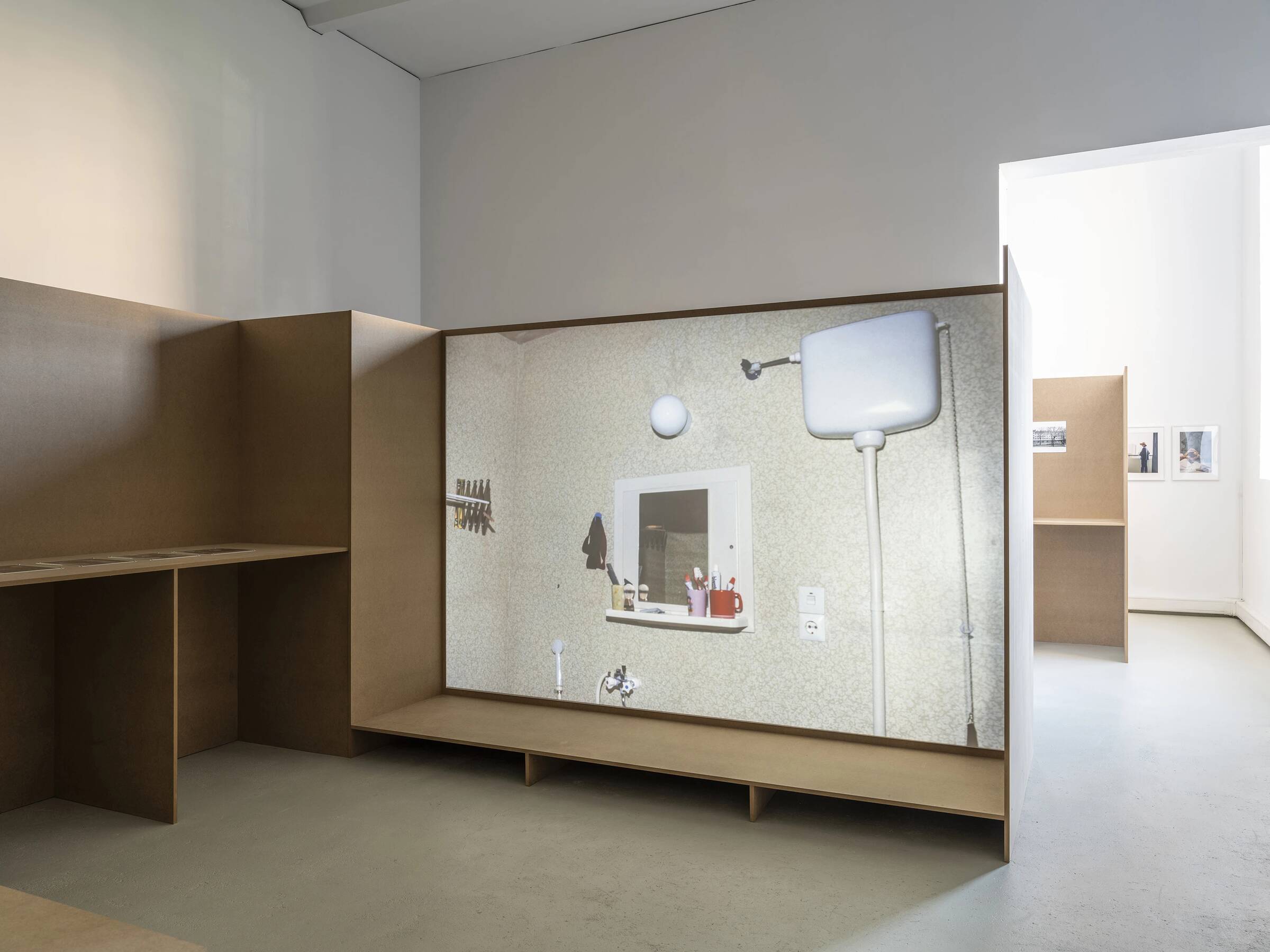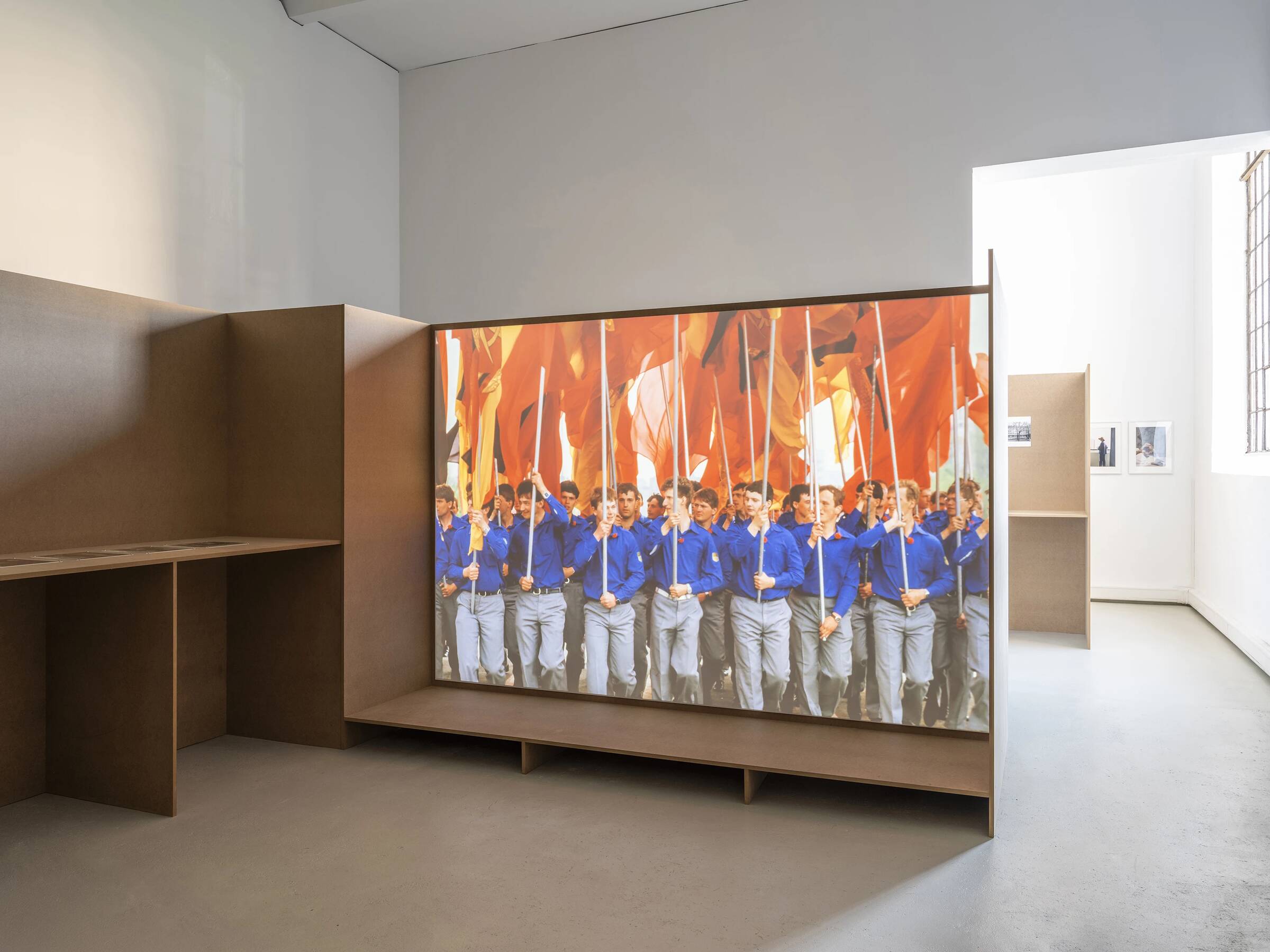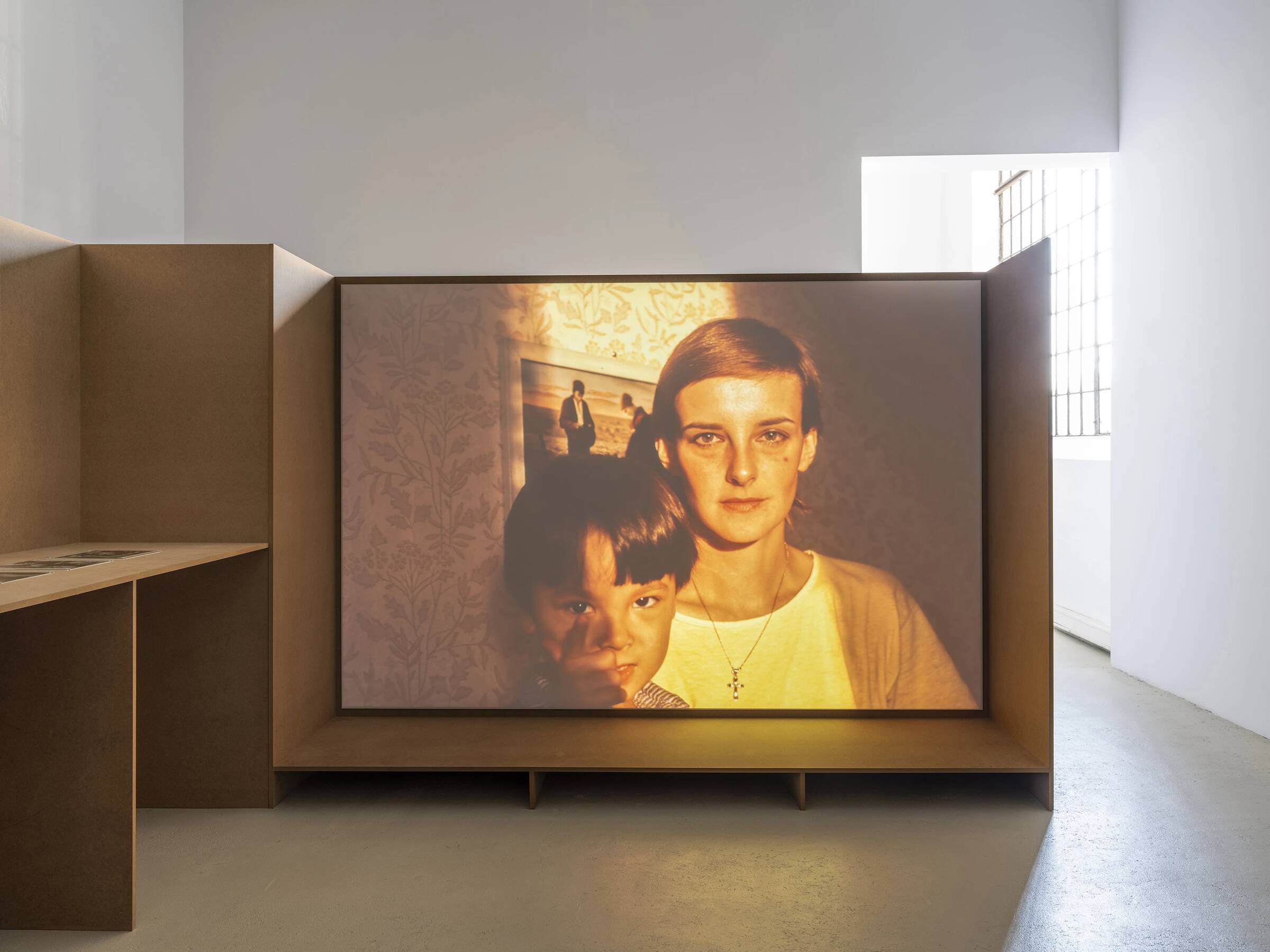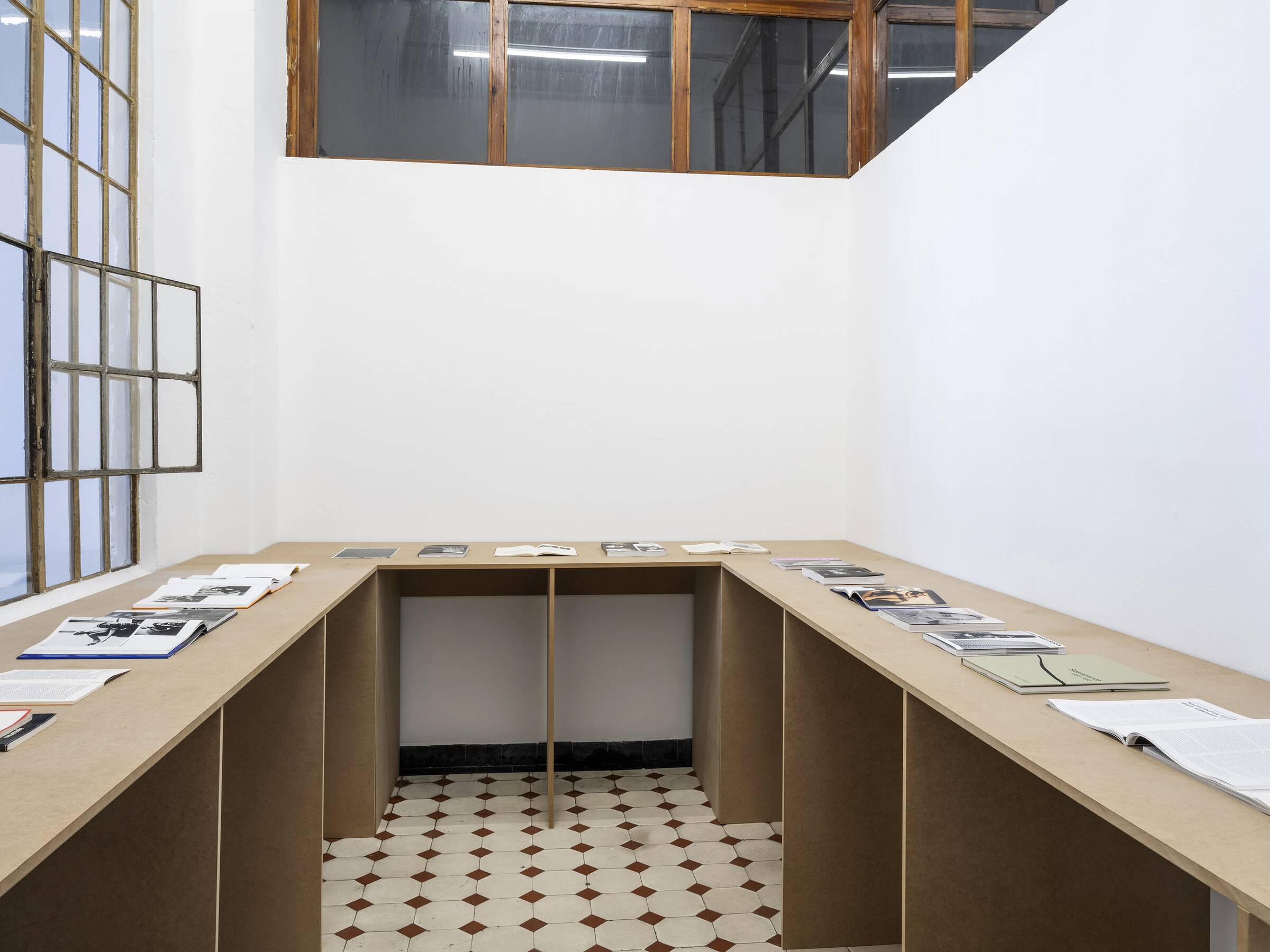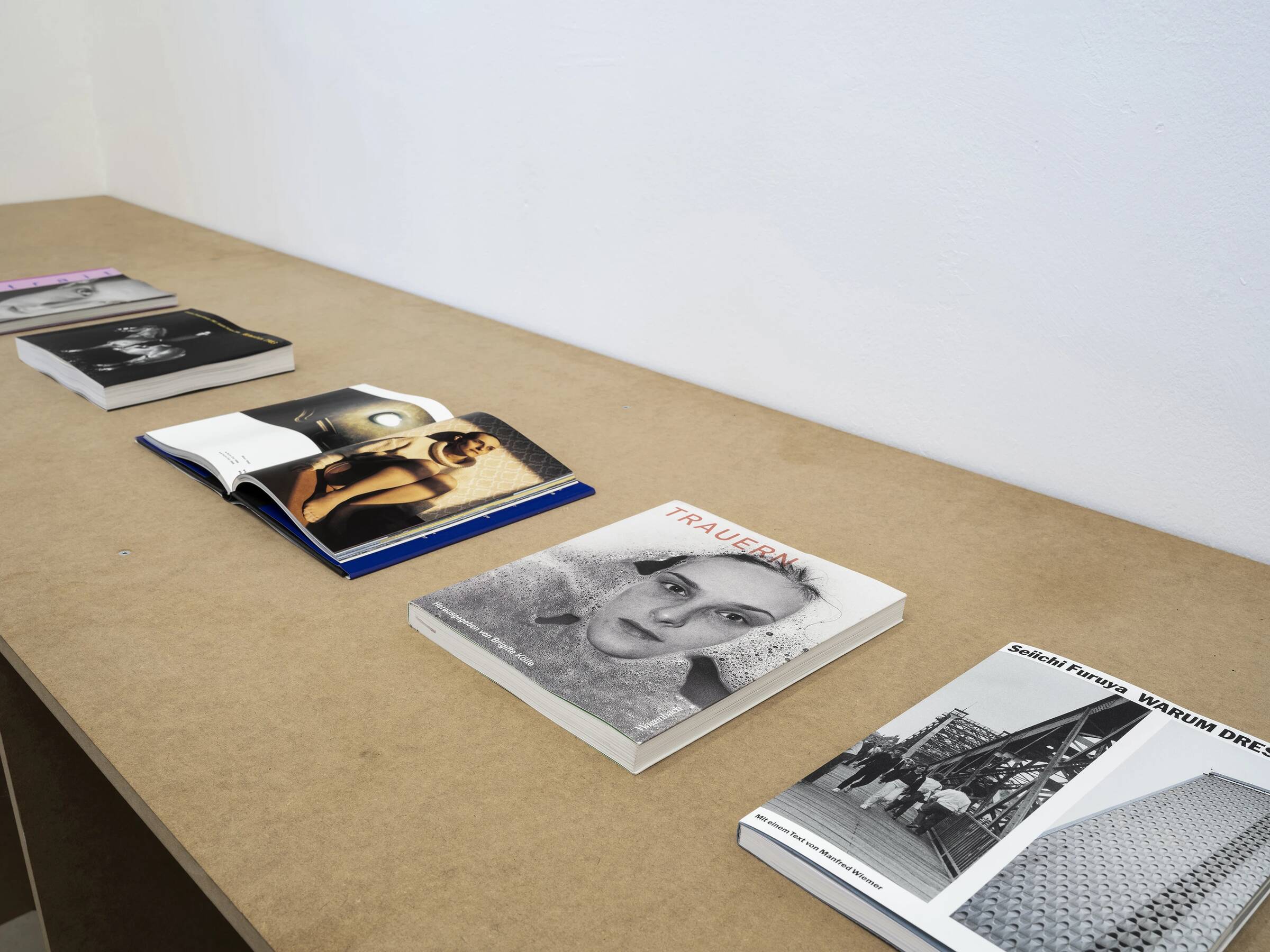Exhibition Text
With 8 erweiterte portraits the Kunstverein für Mecklenburg und Vorpommern in Schwerin presents an exhibition that places the work of Austrian photographer Cora Pongracz (1943-2003) in focus. Through the medium of photography Pongracz’s works open a dialogue about identity and a politics of representation that is sensitive towards diversity. In order to reflect both the significance and the potential of Pongracz’s artistic practice in the context of current social discourses, a number of contemporary artists have been invited to respond and relate to Pongracz’s work through their own photographs, texts, performances, and other forms of critical interventions, throughout the exhibition.
The first dialogical exhibition expands Cora Pongracz’s 56-part series and exhibition of the same name, 8 erweiterte portraits, with two serial cycles of works by Seiichi Furuya. Since the 1970s, the Japanese photographer, who lives in Graz, has been using the medium of photography to process personal experiences and processes of remembering and (non-)forgetting in a multi-layered visual project. In numerous exhibitions and artist books, he combines portraits, especially of family members, with photographs of living spaces, travels and everyday situations.
The series Portrait, 1978–1985, shows Furuya’s wife Christine Furuya-Gössler, whom he photographed for the first time in 1978 – and thereafter almost daily over a period of seven years. In 1985, after a prolonged period of mental distress, Christine Furuya-Gössler took her own life. She had been diagnosed with schizophrenia in the early 1980s. After her death,the more than a thousand portrait photographs became
a testimony of her presence and her agency – as a person, woman, actress, mother, partner, etc. – and the time they spent together, but also a process of self-assurance for the photographer and a reflection on the social and political realities that shaped their shared life.
Memories of the early years of their relationship and the birth of their son intertwine with Furuyas experience of a European lifestyle initially unfamiliar to him – first in Austria, later in the GDR – as well as the confrontation with mental illness and loss through suicide. The cycle of works does not mark a closing, but rather the beginning of an open, never-ending processing of complex relational networks. The freedom of associative arrangement and referentiality that Furuya grants his series implies a constant (re-)balancing of the roles that are inscribed in both the medium of photography and traditional gender allocations.
The second cycle of works, Berlin-Ost/West-Berlin 1985–87, 2025, also deals with the conditions of a divided reality – in this case, in particular, with changing external circumstances characterised by repeated relocations. From 1984 to 1987, Seiichi Furuya worked as an interpreter for a Japanese construction company. During this time, the family first lived in Dresden and later in East Berlin. The resulting photographs interweave private moments with scenes from public life in the GDR. The projection on view shows 690 of these photographs – mostly in black and white, some in colour. Instead of adhering to a linear order, the sequence of the images follows an open, associative structure.
In addition to photographs of family – like the portraits of Christine Furuya-Gössler – architectural motifs are a central theme throughout the series. Many of the photographs were taken during the celebrations on 4 July 1987 marking the 750th anniversary of the city of Berlin. The SED had over 300 episodes of the city’s history enacted in theatrical scenes and linked these with the portrayal of the supposed achievements of socialism. In its cultural policy competition with the West, the GDR focused on rebuilding the historic city centre. In addition to these architectural reconstructions, the series’ imagery also features industrialized apartment blocks, the Palace of the Republic, the Volksbühne theatre, the Kino International cinema and the Berlin Wall, photographed from both East and West Berlin.
Like the Portrait series, this cycle of works also follows the overarching project of remembrance that fundamentally defines Seiichi Furuyas photographic practice. Similar to Cora Pongracz, both cycles of work reveal lived realities and relationship structures as dynamic, constantly changing relational constellations, which are moulded by intimacy, migration, political framing, subjective experiences, as well as – non-pathologized – psychological states. Both artists thus elude an authoritarian view of the subjected individual. Instead, they create spaces that allow for ambivalence, intermediate states, and a vulnerable understanding of identity that is always in the process of being negotiated – both in images and in life.
Artistic & Managing Director
Hendrike Nagel
Assistant & Program Curator
Luisa Kleemann
Translation
Emma Roy
Material
Biography
Seiichi Furuya was born in Japan in 1950. After graduating from the Polytechnic University of Tokyo in 1972, he moved to Austria – first to Vienna, and from 1975 to Graz, where he met his wife Christine Gössler. In 1984, he took a position as an interpreter in the (former) GDR. Therefore, the family first moved to Dresden, and from 1985 to East Berlin.
Since 1975, Furuya’s work has been shown in numerous solo and group exhibitions, including at the Forum Stadtpark, Graz, the Fotomuseum Winterthur, the Albertina, Vienna, and the Tokyo Photographic Art Museum. Currently, his work is part of a group exhibition at MINSK, Potsdam. Furuya has published several photobooks about Christine, including Mémoires 1978–1988 (1989), Portrait (2000), Border (2014), and Face to Face (2020). In addition, he has been involved in projects such as co-founding the photography magazine Camera Austria and curating exhibitions that introduced Japanese photographers to Europe, including Daido Moriyama (1980), Shomei Tomatsu (1984), and Nobuyoshi Araki (1992).
Sponsors
Mit freundlicher Unterstützung:
